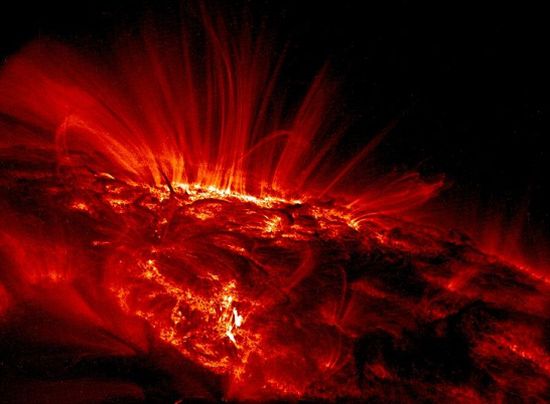
Sunspots, the electrically charged regions on the sun’s surface that prevents the gas from releasing the heat and sinking back below the sun’s surface, may not be there any more to protect us in the near future. A research by solar astronomers at the National Solar Observatory in Tucson, Arizona have shown that the average strength of the magnetic field of the sunspots has dropped drastically and if this continues the sun may go spotless and this will persist for several decades.
Using a measurement known as Zeeman splitting, Matthew Penn and William Livingston have been studying the magnetic strength of sunspots since 1990. The Zeeman splitting is the distance between a pair of infrared spectral lines in a spectrograph taken of the light emitted by iron atoms in the atmosphere of the sun. The intensity of the magnetic field is directly proportional to the distance.
They examined 1500 sunspots and found that the average strength of the magnetic field of the sunspots has dropped from around 2700 gauss to 2000 gauss. In case the decreasing rate continuous to grow at the same speed, the strength will drop to 1500 gauss by 2016, and below this strength the formation of sunspots appears to be impossible.
Via: Physorg


